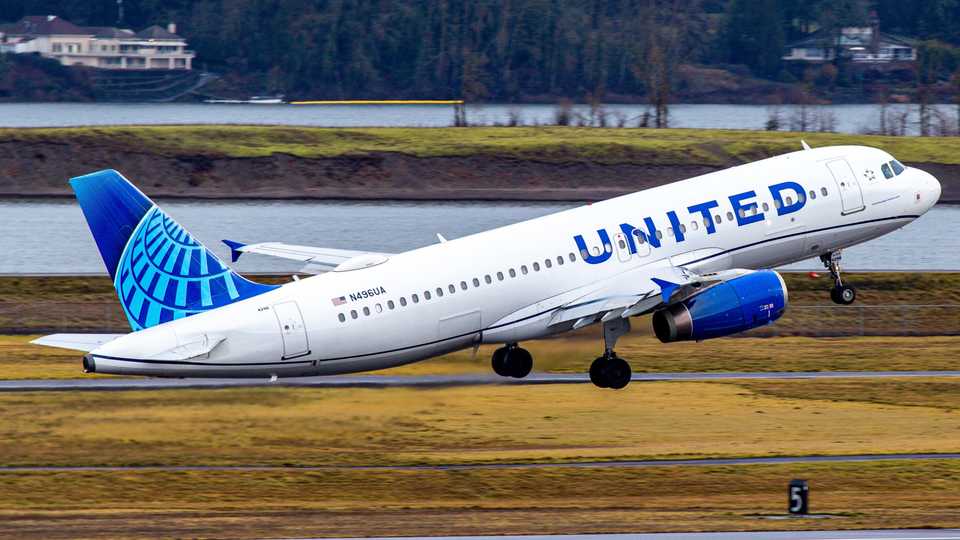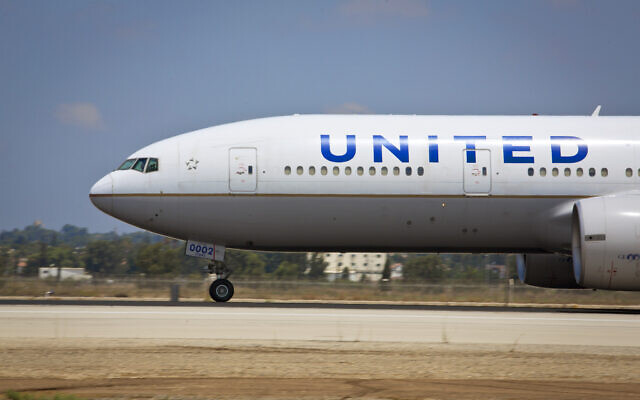United Airlines Bans Former NFL Star Terrell Davis But Then Quickly Rescinds
United Airlines faced a moment of controversy when it banned former NFL star Terrell Davis, only to quickly rescind the decision. The incident highlights the sometimes tumultuous relationship between high-profile individuals and major airlines, often under intense public scrutiny.
The initial ban reportedly stemmed from an altercation or misunderstanding involving Davis during a flight. Details on what exactly transpired remain sparse, but such actions by airlines are usually taken in response to perceived threats or serious disruptions to safety and order on board. The fact that United Airlines moved to ban a well-known figure like Terrell Davis suggests the incident was considered significant.
However, the airline’s rapid reversal of the ban indicates either a reassessment of the incident or external pressures and public backlash influencing their decision. High-profile cases like this often attract media attention, and airlines might reconsider their stance to manage their public image or in light of new evidence or appeals.
The quick rescindment of the ban raises questions about the airline’s decision-making process and the clarity of the incident’s details. It also highlights the complexities airlines face when dealing with high-profile passengers, where decisions can have broader implications beyond the immediate context.
United Airlines has had its share of public relations challenges in the past, and this incident adds another layer to its operational narrative. It underscores the importance of clear communication, fairness, and perhaps a need for better protocols in handling such situations.
For Terrell Davis, this incident could have been a considerable inconvenience and a potential hit to his public image, but the swift reversal likely mitigated longer-term impacts. For United Airlines, it serves as a reminder of the scrutiny they are under and the need to handle every passenger, regardless of their fame, with fairness and transparency.
United Airlines faced a moment of controversy when it banned former NFL star Terrell Davis, only to quickly rescind the decision. The incident highlights the sometimes tumultuous relationship between high-profile individuals and major airlines, often under intense public scrutiny.
The initial ban reportedly stemmed from an altercation or misunderstanding involving Davis during a flight. Details on what exactly transpired remain sparse, but such actions by airlines are usually taken in response to perceived threats or serious disruptions to safety and order on board. The fact that United Airlines moved to ban a well-known figure like Terrell Davis suggests the incident was considered significant.
However, the airline’s rapid reversal of the ban indicates either a reassessment of the incident or external pressures and public backlash influencing their decision. High-profile cases like this often attract media attention, and airlines might reconsider their stance to manage their public image or in light of new evidence or appeals.
The quick rescindment of the ban raises questions about the airline’s decision-making process and the clarity of the incident’s details. It also highlights the complexities airlines face when dealing with high-profile passengers, where decisions can have broader implications beyond the immediate context.
United Airlines has had its share of public relations challenges in the past, and this incident adds another layer to its operational narrative. It underscores the importance of clear communication, fairness, and perhaps a need for better protocols in handling such situations.
For Terrell Davis, this incident could have been a considerable inconvenience and a potential hit to his public image, but the swift reversal likely mitigated longer-term impacts. For United Airlines, it serves as a reminder of the scrutiny they are under and the need to handle every passenger, regardless of their fame, with fairness and transparency.
United Airlines faced a moment of controversy when it banned former NFL star Terrell Davis, only to quickly rescind the decision. The incident highlights the sometimes tumultuous relationship between high-profile individuals and major airlines, often under intense public scrutiny.
The initial ban reportedly stemmed from an altercation or misunderstanding involving Davis during a flight. Details on what exactly transpired remain sparse, but such actions by airlines are usually taken in response to perceived threats or serious disruptions to safety and order on board. The fact that United Airlines moved to ban a well-known figure like Terrell Davis suggests the incident was considered significant.
However, the airline’s rapid reversal of the ban indicates either a reassessment of the incident or external pressures and public backlash influencing their decision. High-profile cases like this often attract media attention, and airlines might reconsider their stance to manage their public image or in light of new evidence or appeals.
The quick rescindment of the ban raises questions about the airline’s decision-making process and the clarity of the incident’s details. It also highlights the complexities airlines face when dealing with high-profile passengers, where decisions can have broader implications beyond the immediate context.
United Airlines has had its share of public relations challenges in the past, and this incident adds another layer to its operational narrative. It underscores the importance of clear communication, fairness, and perhaps a need for better protocols in handling such situations.
For Terrell Davis, this incident could have been a considerable inconvenience and a potential hit to his public image, but the swift reversal likely mitigated longer-term impacts. For United Airlines, it serves as a reminder of the scrutiny they are under and the need to handle every passenger, regardless of their fame, with fairness and transparency.
United Airlines faced a moment of controversy when it banned former NFL star Terrell Davis, only to quickly rescind the decision. The incident highlights the sometimes tumultuous relationship between high-profile individuals and major airlines, often under intense public scrutiny.
The initial ban reportedly stemmed from an altercation or misunderstanding involving Davis during a flight. Details on what exactly transpired remain sparse, but such actions by airlines are usually taken in response to perceived threats or serious disruptions to safety and order on board. The fact that United Airlines moved to ban a well-known figure like Terrell Davis suggests the incident was considered significant.
However, the airline’s rapid reversal of the ban indicates either a reassessment of the incident or external pressures and public backlash influencing their decision. High-profile cases like this often attract media attention, and airlines might reconsider their stance to manage their public image or in light of new evidence or appeals.
The quick rescindment of the ban raises questions about the airline’s decision-making process and the clarity of the incident’s details. It also highlights the complexities airlines face when dealing with high-profile passengers, where decisions can have broader implications beyond the immediate context.
United Airlines has had its share of public relations challenges in the past, and this incident adds another layer to its operational narrative. It underscores the importance of clear communication, fairness, and perhaps a need for better protocols in handling such situations.
For Terrell Davis, this incident could have been a considerable inconvenience and a potential hit to his public image, but the swift reversal likely mitigated longer-term impacts. For United Airlines, it serves as a reminder of the scrutiny they are under and the need to handle every passenger, regardless of their fame, with fairness and transparency.



![Magdalena Fręch – Nadia Podoroska [RELACJA NA ŻYWO]](https://dailynewsreports.us/wp-content/uploads/2024/08/Screenshot_20240821-082040.png)


